Many people love log cabins because of their timeless charm. However, few consider what it takes to build one. Since you clicked on this article, you must want to know what’s the best log size for a log cabin. The best log size is typically between 8 and 12 inches in diameter. Read on as the Cabin Spots team explains why the correct log size is critical to building a sturdy and cozy home.
Smaller logs are easier to work with and cost less when building a cabin. They also dry faster, which can help prevent settling issues. Larger logs offer better insulation and a more rustic look and can be more durable.
For most, your personal preference will depend on your needs and budget. Consider the climate where you’re building, how you’ll use the cabin, and what look you want. A professional builder can help you pick the perfect size for your dream log home or weekend getaway.
Key Takeaways
- Different size logs affect cost, insulation, and aesthetics
- Climate and intended use guide log size selection
- Professional advice helps optimize log cabin design
Understanding Log Cabin Timber Basics
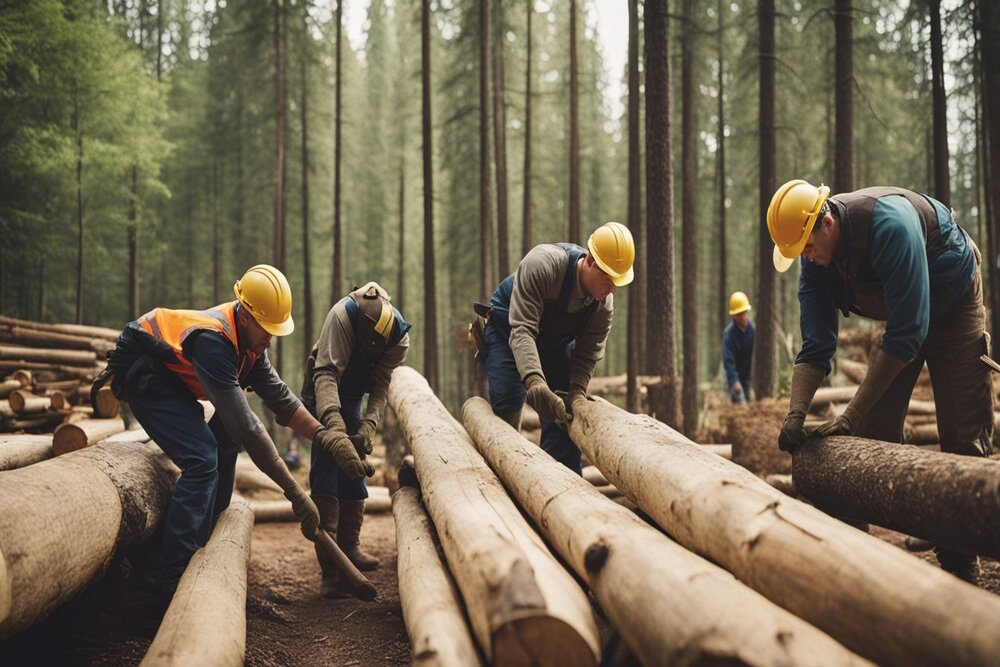
Log cabins blend rustic charm with modern comforts. They use natural materials to create cozy homes that connect you to nature.
Defining the Log Cabin and Log Home Concept
Log cabins are houses built from logs. The walls are made of stacked, interlocking logs. Log homes are similar but often larger and more complex.
Log cabins come in many shapes and sizes. Some are small weekend getaways, and others are spacious year-round homes.
Log cabins use whole or shaped logs for walls. The logs can be round, square, or D-shaped. Builders often leave some of the natural wood visible inside and out.
Historical Significance and Modern Style
Log cabins have a rich history in North America. Early settlers built them as simple shelters using nearby trees.
Today, log cabins mix old and new. You can have rustic looks with modern features. Many cabins now have large windows, open floor plans, and high-end kitchens.
Log homes are well-suited to forests or mountains. They use local lumber and blend with nature. You can customize your cabin to match your style and needs.
Modern log cabins come in many designs. Some look like traditional cabins, while others have a more current feel with sleek lines and big glass walls.
Selecting the Ideal Species To Build A Log Home
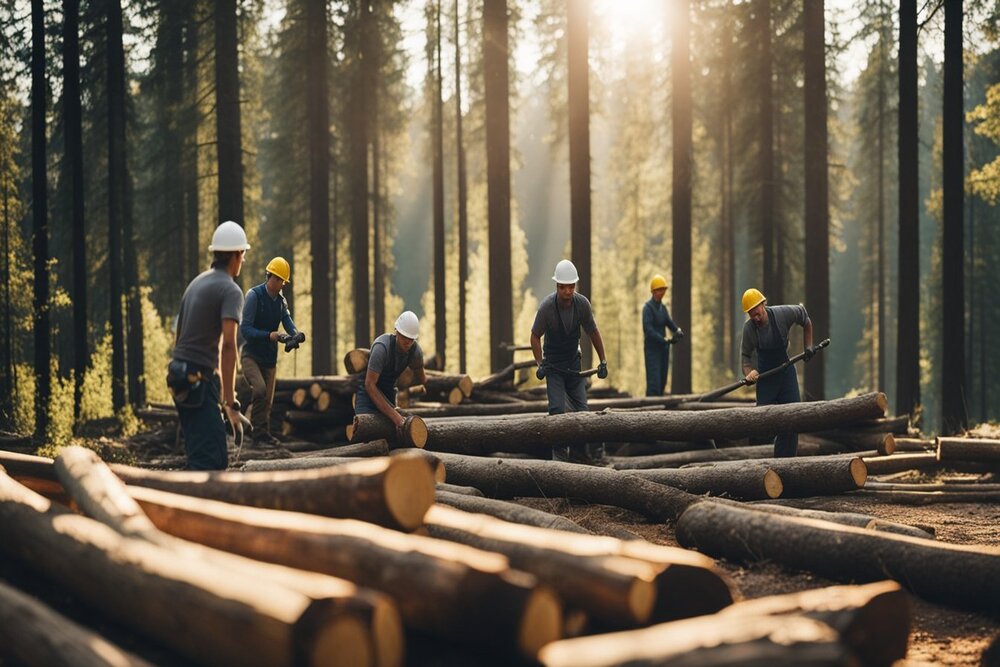
The type of wood you choose for your log cabin affects its looks, strength, and lifespan. Different tree species offer unique benefits and drawbacks for cabin construction.
Evaluating Tree Species for Logs
When picking logs for your cabin, think about the trees in your area. Look at how well they grow and how easy they are to get. Some good choices are fir, pine, cedar, and spruce. Each has its good points.
Fir logs are strong and don’t shrink much. Eastern white pine trees are a popular choice, often cheaper and easy to work with. Cedar smells nice and fights off bugs and rot. Spruce is a light but tough choice to build your log cabin.
Think about how the wood will look over time. Some logs may keep their color better than others. Also, check how well the wood stands up to your local weather.
Fir vs. Pine vs. Cedar vs. Spruce vs. Oak
Douglas Fir is a top pick for many cabins. It’s strong and keeps its shape well. Pine is softer but costs less, so it’s good if you’re on a budget.
Cedar is great for wet areas. It doesn’t rot easily, and bugs don’t like it. But it can be pricey. Spruce is light and strong, and it’s good for big logs.
Here’s a quick look at each:
- Fir: Strong, stable, medium cost
- Pine: Soft, cheap, easy to work with
- Cedar: Bug-resistant, smells good, expensive
- Spruce: Light, strong, good for large logs
- Oak: Durable, long-lasting wood
Pick the one that best fits your needs and budget.
Understanding Wood Characteristics
Each wood type has its own traits. These affect how your cabin looks and lasts.
Grain pattern changes the wood’s look. Tight grain is usually stronger. Wide grain can be pretty but may not be as tough.
Wood density matters, too. Denser woods are harder to cut but last longer. Lighter woods are easier to work with but may wear faster.
Some woods have natural oils. These can help protect against rot and bugs. Cedar is known for this.
Think about how the wood will age. Some types turn gray over time, while others keep their color longer. This can change how your cabin looks years later.
Planning and Design Considerations
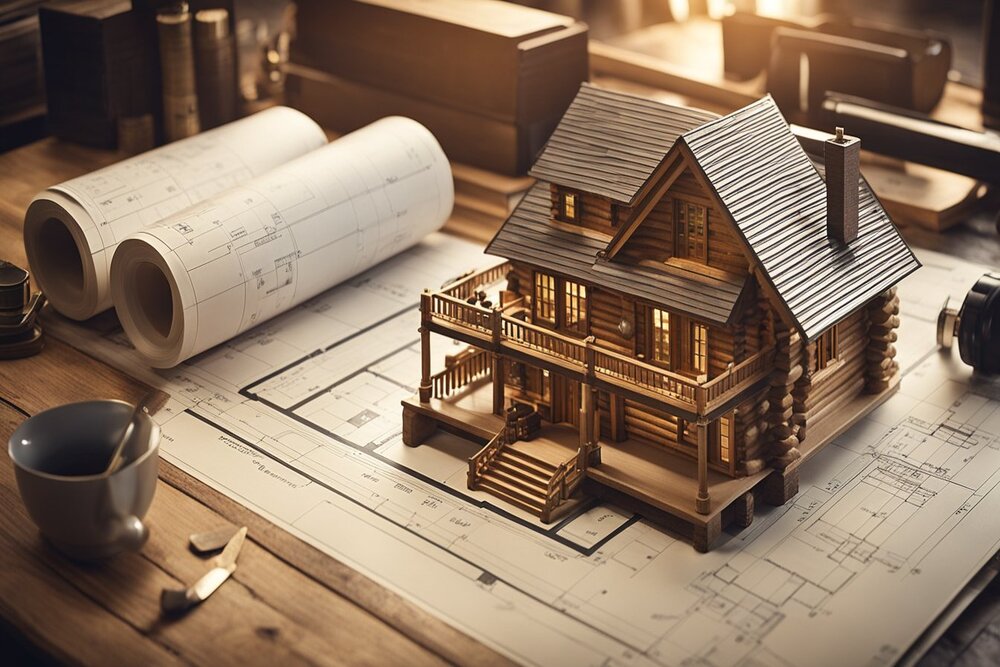
Careful planning and design are key to creating your ideal log cabin. You’ll need to navigate regulations, work with architects, and consider how best to use the space.
Navigating Zoning Laws and Building Codes
Before you start building, check with your local municipal planning department. They can tell you about zoning laws and building codes that apply to log cabins in your area. These rules may affect your cabin’s size, height, and location.
Some standard regulations include:
- Minimum lot sizes
- Setback requirements from property lines
- Height restrictions
- Fire safety standards
Get all necessary permits before starting construction. This will help you avoid fines or having to make costly changes later.
Custom Log Home Designing Process
Working with a log cabin architect can make the design process smoother. They’ll help you create cabin plans that fit your needs and budget.
Steps in the design process:
- Discuss your vision and requirements
- Create initial sketches
- Develop detailed floor plans
- Choose log styles and other materials
- Finalize the design
Consider the number of bedrooms, kitchen layout, and storage space. Think about how you’ll use the cabin now and in the future.
Incorporating Office Space and Aesthetic Contours
Include a dedicated office space if you plan to work from your cabin. This can be a separate room or a nook in a larger living area. Make sure it has good lighting and enough electrical outlets for your equipment.
When designing the cabin’s exterior, consider how it will fit into the landscape. Use the natural contours of the land to enhance the cabin’s look. This can also help with drainage and energy efficiency.
Some design ideas to consider:
- Large windows to bring in natural light
- A wraparound porch for outdoor living
- Sloped roofs to match hilly terrain
By planning carefully, you can create a log cabin that’s both beautiful and functional.
Log Size Characteristics for Structural Integrity
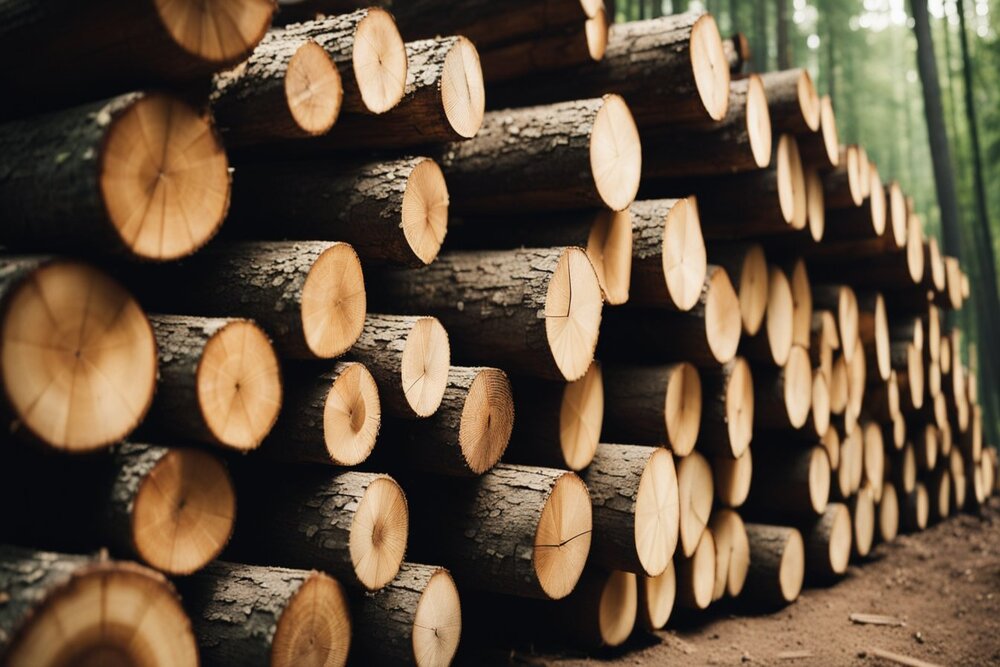
The size and quality of logs significantly impact a log cabin’s strength and stability. Key factors include log diameter, thickness, moisture levels, and natural splitting.
Determining the Optimal Log Diameter
Log diameter plays a big role in cabin strength. Bigger logs offer more insulation and stability. For most cabins, logs 10-16 inches wide work well. Smaller 8-inch logs can be okay for small structures. Larger 20-inch logs add a grand look to bigger homes.
Your climate matters, too. Thicker logs are needed in colder areas for better insulation, while smaller logs can be used in milder climates.
Log shape is also important. Round logs are stronger than squared ones. They settle better over time.
Log Thickness, Moisture Content, and Checking
Log thickness affects insulation and stability. Thicker logs insulate better but cost more. A good rule is to use logs at least 6 inches thick.
Moisture content is crucial. Logs should be dried to 15-20% moisture before use. Too much moisture leads to shrinking and settling issues.
Checking refers to cracks that form as logs dry. Some checking is normal and doesn’t hurt strength. But big cracks can cause problems. Choose logs with minimal checking.
Proper sealing helps control moisture and reduces checking. It also protects against insects and rot.
Construction Techniques and Joinery
Building a log cabin requires specific methods and skills. The way logs fit together, and the expertise of builders are critical to a sturdy, long-lasting structure.
Notching, Joints, and Log Assembly
Log cabin construction uses special cuts called notches to join logs. The butt and pass notch is common. It lets logs rest securely on each other. Builders cut notches with axes, chainsaws, or chisels. They must be precise.
Joints are crucial connection points. Proper joinery keeps logs tight and prevents gaps. Builders use various joint types based on the cabin design. Some common ones are:
- Dovetail joints
- Saddle notch joints
- Corner post joints
Assembly starts at the corners. Builders stack logs individually, checking for level and plumb as they go. Chinking fills spaces between logs, keeping out drafts and pests.
Importance of Skill and Craftsmanship
Building a log cabin takes skill and practice. Experienced builders know how to:
- Choose the right logs
- Cut accurate notches
- Create tight-fitting joints
Good craftsmanship makes for a more structurally sound cabin, which is also stronger, more attractive, and helps it last longer. Skilled builders can work faster and waste less material.
You can learn log cabin building skills through:
- Apprenticeships
- Workshops
- Hands-on practice
Quality hand tools are essential, too. Sharp axes, well-maintained chainsaws, and proper measuring tools help ensure good results.
Insulation, Maintenance, and Longevity
Log size affects how well your cabin keeps warm and how long it lasts. Good insulation and regular upkeep are key to a cozy, durable, and energy-efficient log home.
Ensuring Proper Insulation in Log Cabins
Bigger logs offer better insulation. Logs 8 inches or wider provide good heat retention, but you can also boost insulation with other methods.
Add foam insulation between logs for extra warmth. Use chinking to seal gaps and stop drafts. Install double-pane windows to keep heat in.
Don’t forget the roof and floor. Insulate these areas well for a snug cabin year-round. Good insulation saves money on heating and cooling bills.
Routine Maintenance for Log Homes
Regular care keeps your log cabin in top shape. Inspect your cabin twice a year for issues. Look for cracks, gaps, or signs of pests.
Clean logs with a mild detergent and soft brush. This removes dirt and prevents mold. Apply a new coat of stain every 3-5 years.
Check the chinking between logs. Replace it if it’s cracked or falling out. Trim trees and bushes away from your cabin to reduce moisture.
Fix minor problems fast to avoid major repairs later. Good maintenance makes your log cabin last longer and looks great for years.
The Finishing Touches: Windows, Doors, and Interiors
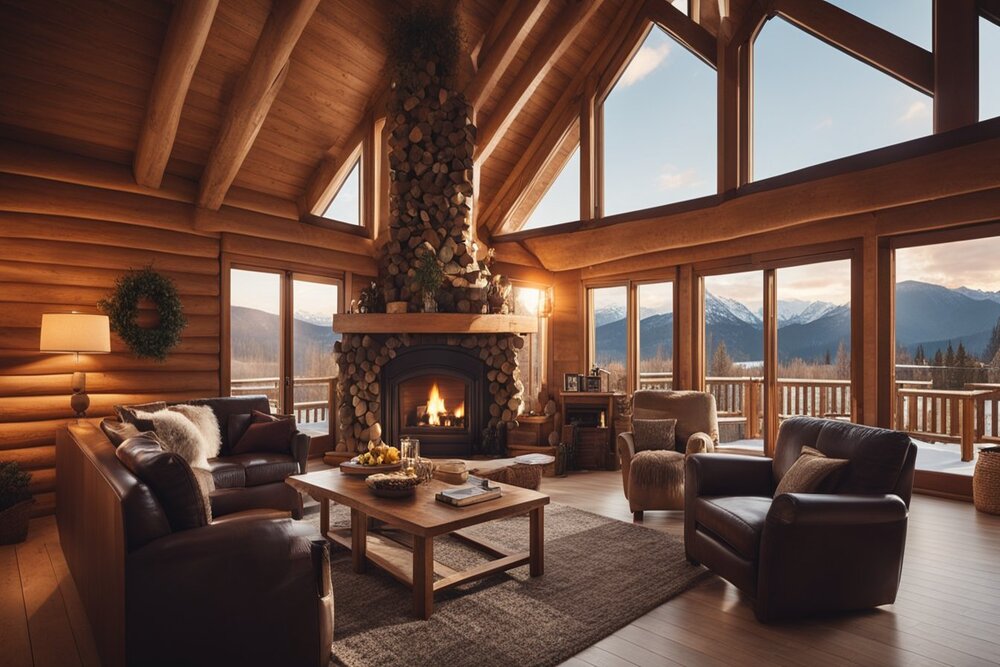
Windows, doors, and interior design significantly affect your log cabin’s comfort and style. These elements add character and make your cabin feel like home.
Selecting Windows and Doors for Efficiency and Design
Choose windows that match your cabin’s style. Double-pane glass helps keep heat in during winter, and casement windows open wide for good airflow in summer.
Think about where to put windows for the best views and natural light. Big picture windows can showcase nature. Skylights bring in extra sunshine.
Consider a sturdy wood front door, sealed tightly to keep out drafts. Sliding glass doors work well for decks or patios. They let in lots of light and provide easy outdoor access.
Make sure doors and windows fit snugly in their frames. This stops air leaks and saves energy. Weather stripping helps seal any air gaps.
Interior Design for Comfort and Aesthetic
Inside your cabin, use colors and textures that feel cozy. Warm earth tones work well with wood. Think browns, greens, and soft yellows.
Keep furniture simple and comfortable. An oversized soft couch is great for relaxing. Add chairs with warm blankets for extra coziness.
Use area rugs to soften wood floors and add color. Hang curtains to frame views and add warmth.
Mix natural and artificial sources for lighting. Table lamps create a soft glow at night, and pendant lights can highlight special areas.
Remember storage. Built-in shelves and cabinets save space and look great. They also give you spots to display items you love.
Budgeting and Cost Management
Building a log cabin requires careful financial planning. Knowing your costs and budgeting are key to a successful project.
Estimating Costs for Building Your Own Log Cabin
The cost of a log cabin varies based on size, materials, and location. A basic 1,000-square-foot cabin might cost $150,000 to $300,000. Log cabin kits can range from $50 to $150 per square foot. Custom log homes often cost more, starting at $200 per square foot.
Factors that affect price include:
- Log type and quality
- Foundation work
- Roofing materials
- Interior finishes
- Labor costs in your area
Get quotes from several builders to compare prices. Don’t forget to budget for site prep, utilities, and permits.
Tips for Staying Within Budget
Set a clear budget before you start. Add 10-20% extra for unexpected costs. This buffer helps avoid financial stress later.
Choose your logs wisely. Pine is cheaper than cedar or oak. Thinner logs cost less but may not insulate as well.
Consider a log cabin kit. These can be more budget-friendly than custom designs. They often come with set prices and fewer surprises.
Do some work yourself if you’re handy. This can cut labor costs. But be realistic about your skills to avoid costly mistakes.
When possible, buy materials in bulk, which can lead to discounts. Plan your purchases to take advantage of sales.
Keep your design simple. Complex layouts and fancy features drive up costs. Focus on what you need in your cabin.
Frequently Asked Questions
Log selection is crucial for building a sturdy and attractive log cabin. The right size, type, and quality of logs impact the cabin’s strength, insulation, and appearance.
How to choose the optimal diameter for cabin logs?
Pick logs between 8 and 16 inches in diameter. Thicker logs provide better insulation but cost more. Smaller logs are cheaper and easier to handle. Match the diameter to your climate and budget.
What is the ideal length for logs when constructing a cabin?
Most cabin logs are 8 to 16 feet long. Longer logs mean fewer joints but are more challenging to move. Shorter logs are easier to work with but require more seams. Choose a length that fits your design and building skills.
Which types of wood are best for building a durable log cabin?
Cedar, pine, and spruce are popular log building choices. Cedar resists decay and insects. Pine is affordable and easy to work with. Spruce is strong and stable. For the best results, pick available logs that grow in your area.
Can the use of green logs impact the integrity of a log cabin?
Green logs can shrink and twist as they dry, leading to gaps and an unstable structure. Seasoned logs are more stable but cost more. If you use green logs, plan for settling and gaps as the wood dries out.
What are the standard dimensions for logs in common cabin designs?
Standard log sizes are 6×8 inches, 8×8 inches, and 6×12 inches. Round logs often range from 8 to 12 inches in diameter. Your local building codes may require specific log sizes for structural safety.
Where can one find quality logs for cabin construction for sale?
Look for cabin builders, local sawmills, timber companies, or log home manufacturers. They often sell logs cut to size for cabins. Online marketplaces also list logs for sale. If possible, inspect the logs in person before buying.

